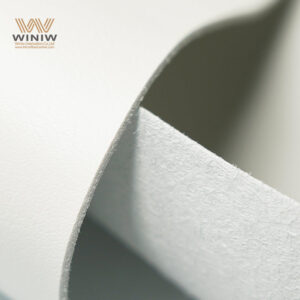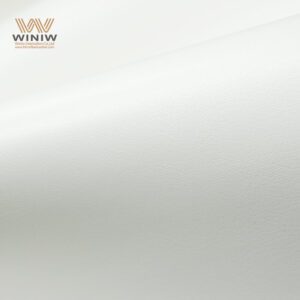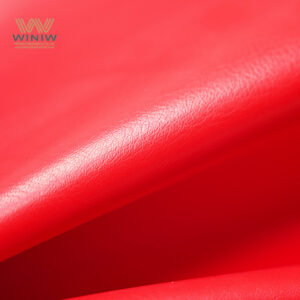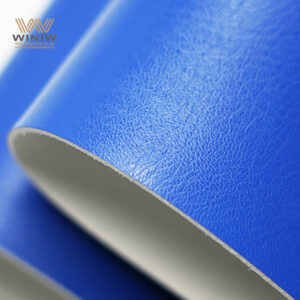
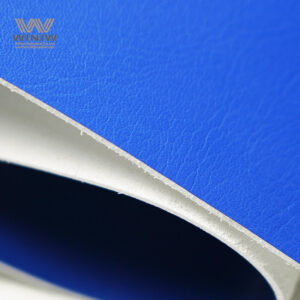
When I look for the best leather soccer cleats, I always consider models like Nike Tiempo Legend 10 Elite, Mizuno Morelia Neo Beta IV, Adidas Copa Mundial, TF1 – Eleven, and Nike Tiempo Legend 9. These best soccer cleats set the standard for comfort and touch on the field. I notice that the fit and feel of these soccer shoes can elevate any player’s game. Quality leather construction helps these soccer shoes mold to my feet, giving unmatched comfort. For serious soccer players, finding the best leather soccer boots means choosing shoes that balance support, durability, and performance.
Key Takeaways
- Leather soccer cleats mold to your feet over time, providing unmatched comfort and a natural feel.
- Choose boots based on your foot shape and playing style to enhance your performance on the field.
- Regular cleaning and conditioning of leather boots extend their life and maintain comfort.
- Top models like Nike Tiempo Legend 10 Elite and Adidas Copa Mundial offer excellent support and durability.
- Investing in quality leather soccer boots can elevate your game and boost your confidence.
Why Choose Leather Soccer Boots?
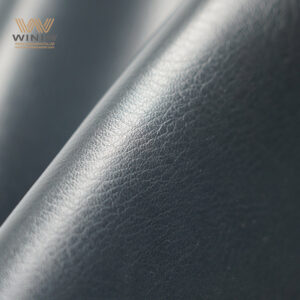
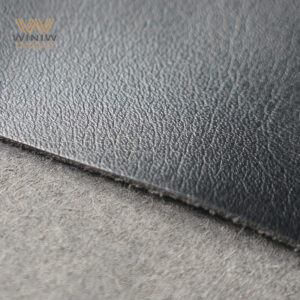
Comfort Benefits
When I step onto the field, I want my soccer boots to give me the best comfort possible. Leather soccer boots stand out because they mold to my feet over time. This creates a natural barefoot feel that synthetic materials cannot match. I notice that the soft leather upper adapts to my foot shape, reducing pressure points and making every movement smoother. The breathable nature of leather keeps my feet cool, even during intense matches. I value how the material allows air to circulate, which helps prevent overheating and discomfort. Many players, including myself, choose leather soccer boots for their versatility and comfort. The natural barefoot feel gives me confidence with every touch of the ball.
I always recommend leather soccer boots to players who want a blend of comfort and a true barefoot sensation on the pitch.
Performance Advantages
Performance matters to me every time I play soccer. Leather soccer boots offer a unique advantage because they provide a close touch on the ball. The natural material delivers a barefoot experience, letting me control the ball with precision. I find that the flexibility of leather helps me move quickly and change direction with ease. Breathable leather keeps my feet dry, which improves my performance throughout the game. I also appreciate the durability of the best leather soccer boots, especially in dry conditions. With proper care, these boots can outlast many synthetic options.
- Synthetic leather boots may last longer in wet weather.
- Genuine leather boots often outlast synthetic ones in dry conditions if I maintain them well.
I trust leather soccer boots for their reliable performance, breathable comfort, and the natural barefoot feel they provide. These qualities make them a top choice for players who want to elevate their game.
Key Features for Comfort and Performance
Fit and Cushioning
When I choose leather soccer boots, I always pay close attention to the fit and cushioning. A natural fit makes a huge difference in how the boots feel during a match. I look for a wide, anatomical fit that allows my feet to move freely without restriction. Premium kangaroo leather uppers provide a soft and responsive touch, which helps me control the ball with precision. The drop-in EVA midsole molds to my foot, offering both comfort and support. This combination of features ensures that I experience comfort and durability throughout every game.
- Premium kangaroo leather upper for a soft, responsive touch
- Drop-in EVA midsole for enhanced comfort and support
- Wide, anatomical fit for a natural feel
A well-cushioned boot reduces fatigue and keeps my feet comfortable, even during long training sessions.
Flexibility and Touch
Flexibility and touch play a major role in my performance on the field. Leather soccer boots give me the flexibility I need to move quickly and change direction with ease. The soft leather upper adapts to my foot, providing excellent ball control and a close touch on the ball. I notice that the touch I get from leather boots is unmatched, allowing me to control the ball in tight spaces. The breathable materials keep my feet cool, which adds to my comfort and performance.
- Flexible leather construction for quick movements
- Superior touch for precise control
- Breathable materials for added comfort
Durability and Support
Durability and support are essential for any player who wants to get the most out of their boots. I always look for a durable design that can withstand the demands of regular play. Leather soccer boots offer both comfort and durability, making them a smart investment. The sturdy construction provides the support I need for quick sprints and sudden stops. With proper care, these boots maintain their shape and performance over time.
I rely on leather soccer boots for their lasting durability and the support they give my feet during intense matches.
By focusing on fit, cushioning, flexibility, touch, durability, and support, I ensure that my boots help me control the game and perform at my best.
Best Leather Soccer Boots: Top Models
Nike Tiempo Legend 10 Elite
When I step onto the pitch in the Nike Tiempo Legend 10 Elite, I immediately notice the difference that premium leather makes. This model uses FlyTouch Plus leather, which feels soft and molds to my foot after just a few sessions. The fit feels secure, and the boot offers a lightweight sensation that never slows me down. I appreciate the adaptive mesh tongue, which adds breathability and keeps my feet cool during intense matches.
For comfort, the Tiempo Legend 10 Elite stands out with its padded heel and responsive insole. I find that the boot cushions every step, reducing fatigue over ninety minutes. The cleats provide excellent traction on both firm ground and artificial grass, which gives me confidence when making quick turns or sprints.
Pros:
- Lightweight design with premium leather upper
- Adaptive fit and excellent breathability
- Reliable traction for multiple surfaces
Cons:
- Higher price point than most options
- May require a short break-in period
Mizuno Morelia Neo Beta IV
The Mizuno Morelia Neo Beta IV represents the best leather soccer technology from Japan. When I lace up these cleats, I feel the difference in craftsmanship. The kangaroo leather upper feels incredibly soft and delivers a barefoot touch on the ball. I notice that the boot remains lightweight, which helps me accelerate quickly and change direction with ease.
Comfort is a major strength of the Morelia Neo Beta IV. The anatomical shape fits my foot perfectly, and the padded collar prevents any rubbing or discomfort. I also appreciate the stability from the external heel counter, which keeps my foot locked in place during fast movements.
Pros:
- Ultra-lightweight for a leather soccer boot
- Superior barefoot touch and ball control
- Excellent fit and stability
Cons:
- Limited availability in some regions
- Slightly narrow fit may not suit wider feet
Adidas Copa Mundial
The Adidas Copa Mundial stands as a legend among the best leather soccer cleats. When I wear these boots, I feel the history and tradition behind every step. The kangaroo leather upper provides unmatched comfort and molds to my foot over time. I trust the Copa Mundial for its consistent fit and classic design.
Comfort features include a cushioned EVA insole and a durable outsole that handles firm ground with ease. The boot offers a reliable grip, which helps me stay balanced during quick changes in direction. The Copa Mundial’s reputation speaks for itself. It holds the title of the best selling boot of all time, which shows the trust and preference players have for this model. This legacy reflects its enduring popularity and status in the soccer world.
Pros:
- Timeless design with premium leather construction
- Exceptional comfort and fit
- Proven durability and reputation
Cons:
- Heavier than modern synthetic models
- Classic look may not appeal to everyone
TF1 – Eleven Turf Shoe
When I play on artificial turf, I reach for the TF1 – Eleven Turf Shoe. This model uses high-quality leather that adapts to my foot and provides a natural touch on the ball. I notice the extra padding around the ankle, which adds comfort and support during long sessions.
The TF1 – Eleven stands out for its specialized soleplate, designed for turf surfaces. The grip feels secure, and I never worry about slipping. The boot’s flexibility allows me to move freely, and the reinforced stitching ensures durability even after months of use.
Pros:
- Designed specifically for turf play
- Comfortable fit with extra ankle support
- Durable construction for frequent use
Cons:
- Not suitable for firm ground or grass
- Slightly heavier due to added padding
Nike Tiempo Legend 9
The Nike Tiempo Legend 9 offers a modern take on the best leather soccer cleats. I enjoy the soft leather upper, which gives me a close touch and excellent ball control. The boot feels lighter than previous generations, and the streamlined design helps me move quickly on the field.
For comfort, the Legend 9 features a padded tongue and cushioned insole. I find that the boot supports my foot well, especially during sprints and sharp turns. The stud pattern provides reliable traction, which boosts my confidence during high-speed play.
Pros:
- Lightweight and responsive design
- Soft leather upper for superior touch
- Supportive fit with good traction
Cons:
- May run narrow for some players
- Less padding compared to the Legend 10 Elite
I always recommend trying on different models to find the best fit for your foot shape and playing style. Each of these best leather soccer cleats offers unique strengths, whether you value comfort, durability, or performance. By choosing the right pair, I believe you can elevate your game and enjoy every moment on the pitch.
Best Soccer Cleats Comparison Table
Comfort Ratings
I always pay close attention to comfort when I select soccer cleats. Here is how I rate the top models for comfort based on my experience:
| Model | Comfort Rating (1-5) | Notes |
|---|---|---|
| Nike Tiempo Legend 10 Elite | 5 | Plush fit, soft leather, cushioned heel |
| Mizuno Morelia Neo Beta IV | 4.5 | Lightweight, molds to foot, less padding |
| Adidas Copa Mundial | 5 | Classic comfort, roomy toe box |
| TF1 – Eleven Turf Shoe | 4 | Extra ankle padding, turf-specific |
| Nike Tiempo Legend 9 | 4 | Streamlined, less padding |
I find that the Copa Mundial and Tiempo Legend 10 Elite deliver the highest comfort for long matches.
Performance Metrics
Performance on the field depends on traction, grip, and ball control. I have compared these boots for soccer play:
| Model | Traction | Grip | Ball Control |
|---|---|---|---|
| Nike Tiempo Legend 10 Elite | 5 | 5 | 5 |
| Mizuno Morelia Neo Beta IV | 4 | 4 | 5 |
| Adidas Copa Mundial | 4 | 5 | 4 |
| TF1 – Eleven Turf Shoe | 4 | 5 | 4 |
| Nike Tiempo Legend 9 | 4 | 4 | 4 |
I notice that the Tiempo Legend 10 Elite stands out for excellent traction and grip. The Copa Mundial and TF1 – Eleven also provide reliable grip, especially on firm ground and turf.
Fit and Sizing
Fit can make or break a soccer boot. I always check sizing before I buy. Here are my notes:
- Nike Tiempo Legend 10 Elite: True to size, snug fit, adapts well.
- Mizuno Morelia Neo Beta IV: Slightly narrow, best for slim feet.
- Adidas Copa Mundial: Runs wide, roomy toe box, great for wider feet.
- TF1 – Eleven Turf Shoe: Standard fit, extra ankle support.
- Nike Tiempo Legend 9: Slightly narrow, hugs the foot closely.
I recommend trying on different models to find the best grip and fit for your foot shape.
Price Comparison
Price often influences my decision. Here is a quick comparison:
| Model | Price Range (USD) |
|---|---|
| Nike Tiempo Legend 10 Elite | $220 – $250 |
| Mizuno Morelia Neo Beta IV | $200 – $240 |
| Adidas Copa Mundial | $150 – $180 |
| TF1 – Eleven Turf Shoe | $120 – $150 |
| Nike Tiempo Legend 9 | $160 – $200 |
I see that the Copa Mundial and TF1 – Eleven offer great value for soccer players who want reliable grip and traction without breaking the bank.
How to Choose Leather Soccer Boots
Foot Shape Tips
When I shop for new soccer boots, I always start by thinking about my foot shape. I know that a good fit can make or break my performance. If I have wide feet, I look for models like the Adidas Copa Mundial. This boot gives me extra room in the toe box. For narrow feet, I prefer the Mizuno Morelia Neo Beta IV. It hugs my foot and keeps it secure. I always try on boots with the same socks I wear during games. This helps me check if the boots feel snug but not too tight. I avoid any pair that pinches or leaves too much space at the heel.
Tip: Walk around the store or your home in new boots to make sure they match your foot shape before playing soccer.
Playing Style Factors
My playing style also guides my choice. If I play as a defender, I want more support and protection. The Nike Tiempo Legend 10 Elite gives me both. For midfielders who need quick turns and close ball control, I recommend lighter boots like the Mizuno Morelia Neo Beta IV. Strikers often choose boots with a soft leather upper for better touch. I always match my position and movement style to the features of the boot. This way, I get the most out of every soccer match.
- Defenders: Look for strong support and durability.
- Midfielders: Choose flexible, lightweight boots for agility.
- Strikers: Pick boots with a soft upper for precise shots.
Budget Considerations
I set a budget before I start shopping. Premium leather soccer boots can cost more, but I see them as an investment in my comfort and performance. If I want value, I consider the TF1 – Eleven Turf Shoe. It offers quality at a lower price. I always balance my needs with what I can spend. Sometimes, last season’s models give me top features at a discount.
Remember: The best soccer boots are the ones that fit your feet, support your style, and match your budget.
Care Tips for Leather Soccer Boots
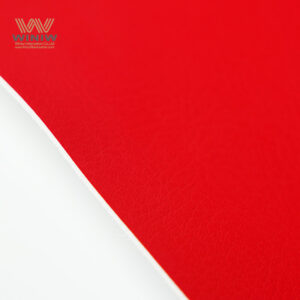
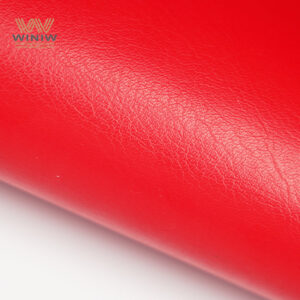
Cleaning and Maintenance
I always keep my leather soccer boots clean to maintain their performance and appearance. After every match, I remove dirt and grass with a soft brush. I use a damp cloth to wipe the surface, making sure not to soak the leather. Water can damage the material, so I avoid submerging the boots. I let them air dry at room temperature, away from direct sunlight or heaters. Excessive heat can cause the leather to crack. For stubborn stains, I use a mild soap solution and gently rub the affected area. I never use harsh chemicals, as they strip away natural oils and weaken the leather.
To keep the shape of my boots, I stuff them with newspaper or use a shoe tree. This prevents creasing and helps the boots dry evenly. I store my boots in a cool, dry place. Proper storage protects them from mold and keeps the leather supple.
Preserving Comfort
Maintaining comfort in my leather soccer boots requires regular conditioning. I use a high-quality leather conditioner to soften the material and prevent stiffness. I apply a small amount of conditioner with a soft cloth, focusing on areas that pinch, such as the toe box and sides. After conditioning, I wear the boots with thick socks overnight. This helps the conditioner work effectively and ensures the leather adapts to my foot shape.
- Use a high-quality leather conditioner for softness.
- Apply conditioner with a soft cloth, targeting pinch points.
- Wear boots with thick socks overnight after conditioning.
I repeat this process every few weeks, especially during the season. Consistent care keeps my boots comfortable and ready for every soccer match.
Tip: Regular cleaning and conditioning extend the life of leather boots and preserve their comfort for peak performance.
I recommend the Nike Tiempo Legend 10 Elite, Mizuno Morelia Neo Beta IV, and Adidas Copa Mundial for their unmatched comfort and performance. Each boot delivers superior play on the soccer field. I always choose based on my foot shape, style, and budget. The right pair helps me play with confidence and control.
Choose wisely and elevate your game with the best leather boots available.
FAQ
What makes leather soccer cleats better than synthetic ones?
I choose leather cleats for their natural fit and superior touch. Leather molds to my foot, giving me comfort and control. Synthetic options often feel stiffer and less responsive.
How do I break in new leather soccer boots quickly?
I wear my boots around the house with thick socks for short periods. This helps the leather stretch and adapt to my feet. I avoid soaking them in water.
Can I use leather soccer cleats on artificial turf?
I use turf-specific models like the TF1 – Eleven for artificial surfaces. Regular leather cleats may wear out faster on turf. Always check the soleplate design before playing.
How often should I condition my leather soccer boots?
I condition my boots every few weeks during the season. Regular conditioning keeps the leather soft and prevents cracking. I use a small amount of leather conditioner for best results.
What should I do if my leather soccer boots get wet?
I remove excess moisture with a towel. I let the boots air dry at room temperature. I never use direct heat, which can damage the leather.


